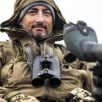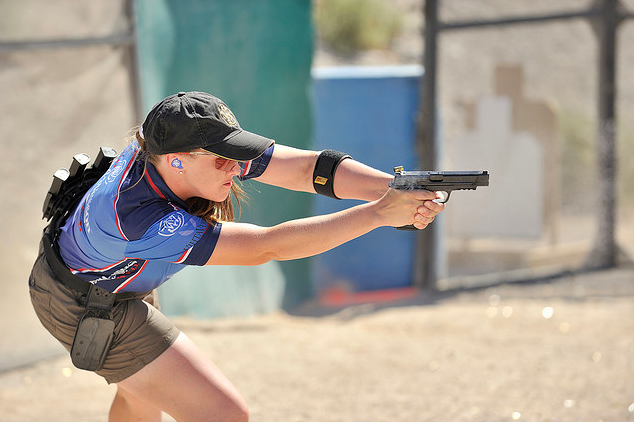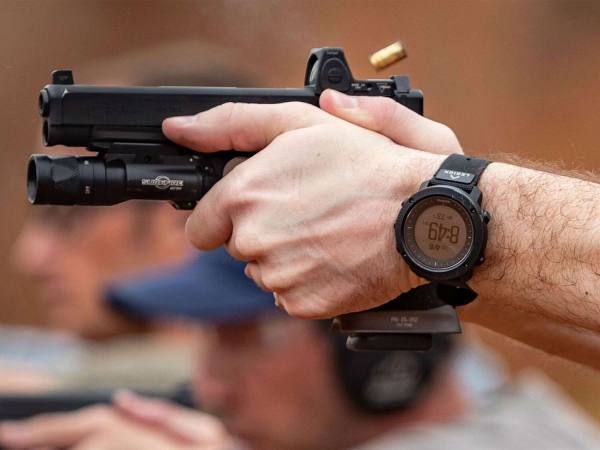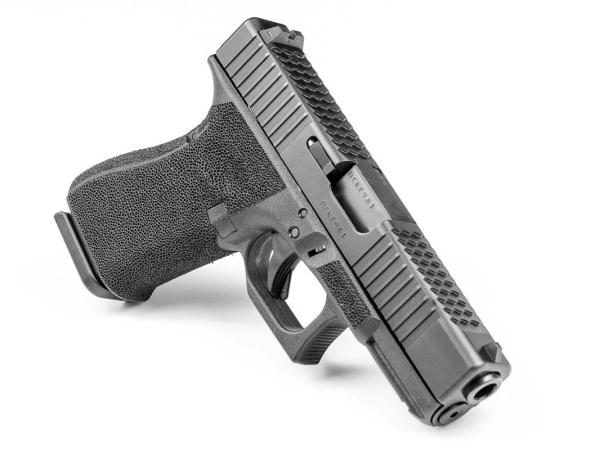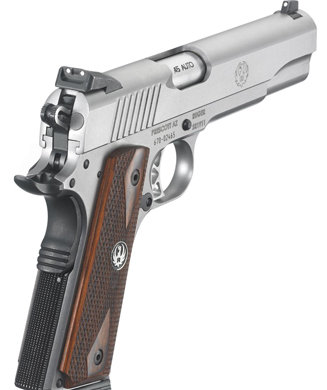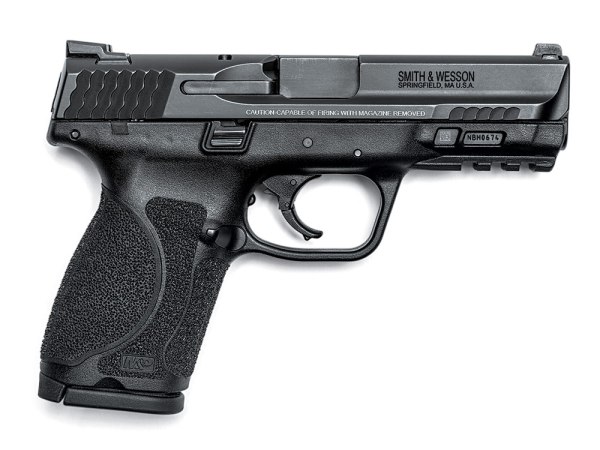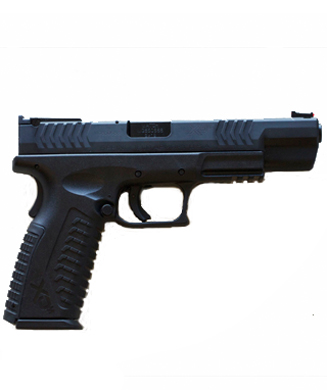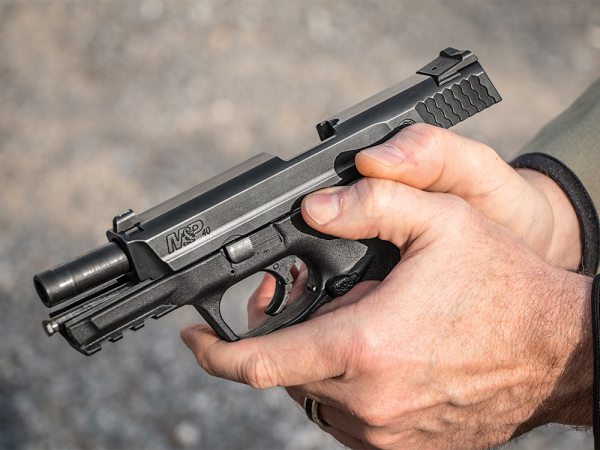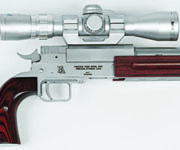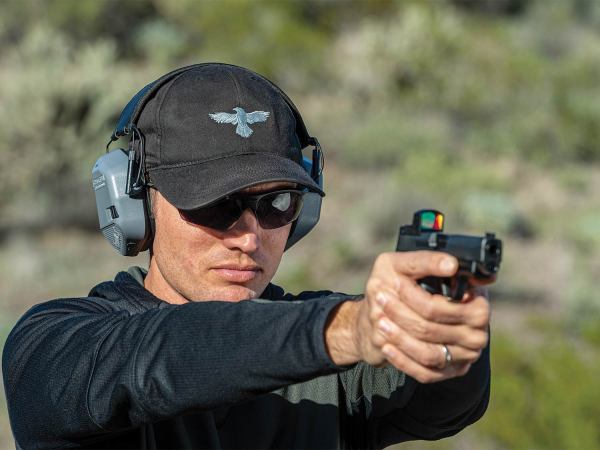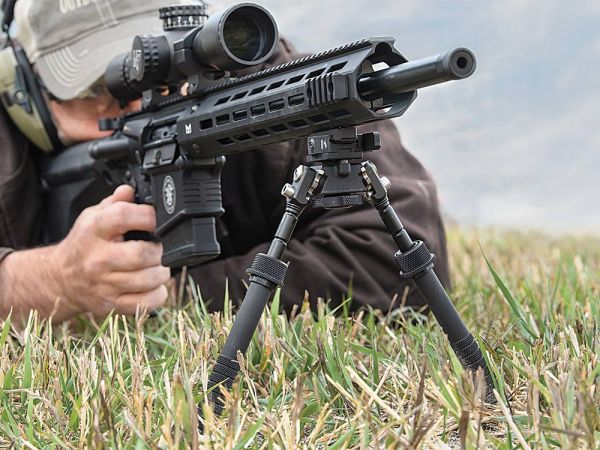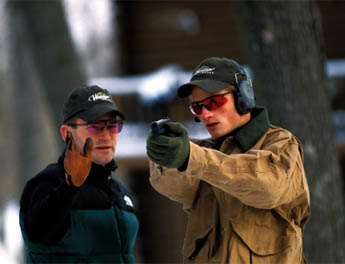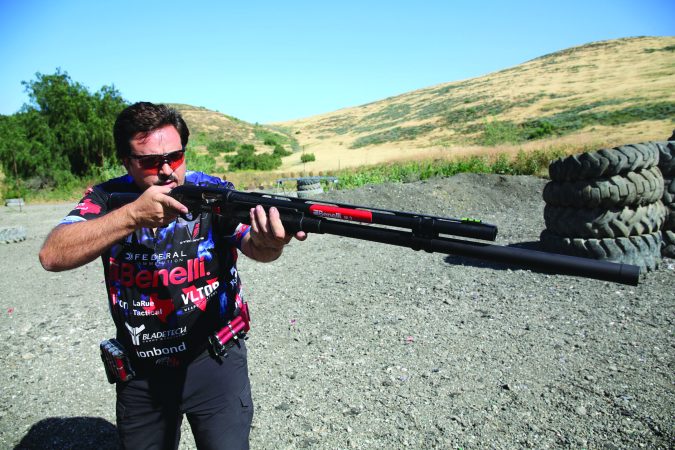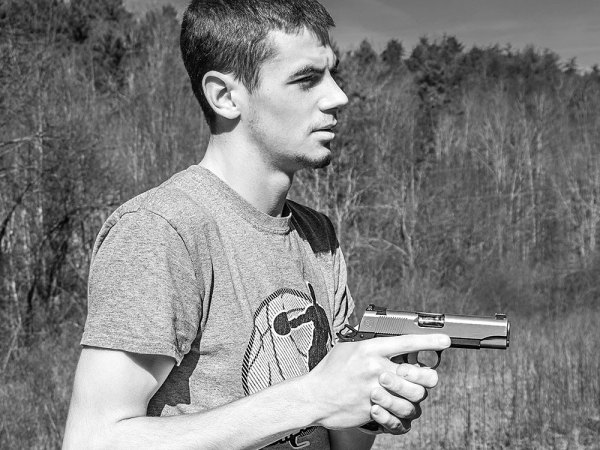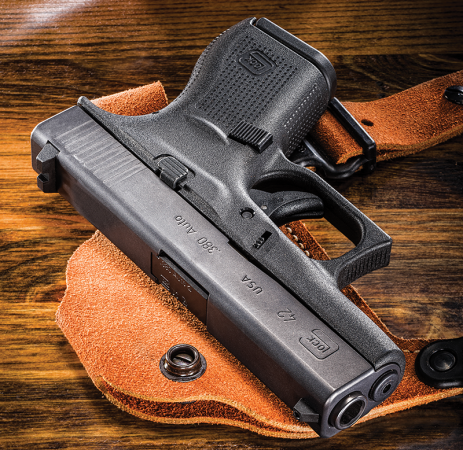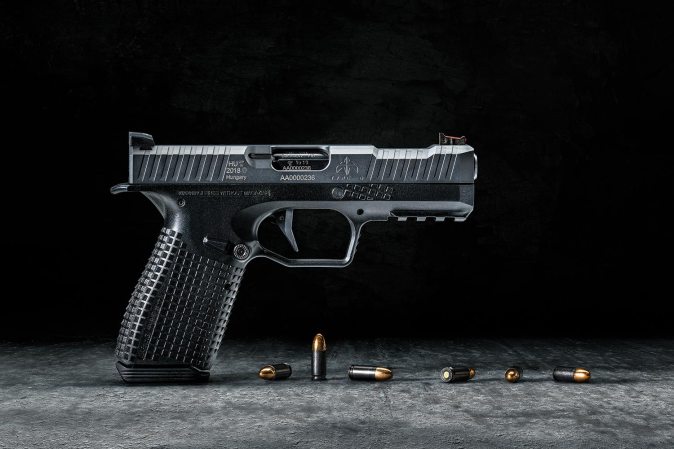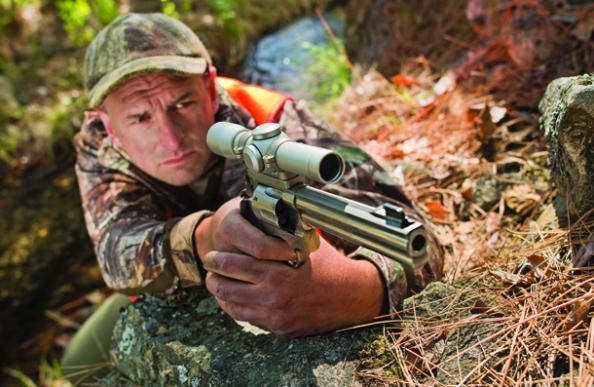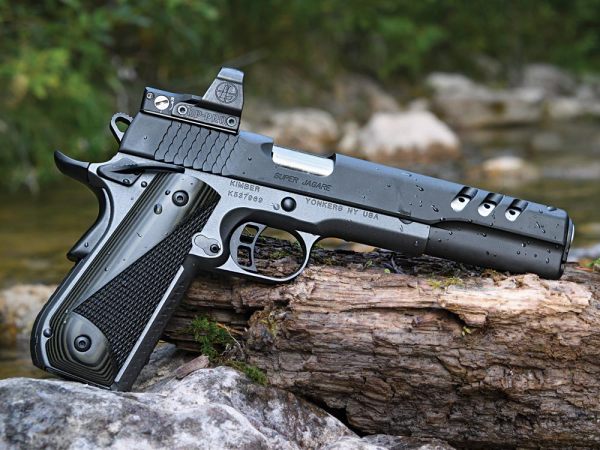We may earn revenue from the products available on this page and participate in affiliate programs. Learn More ›
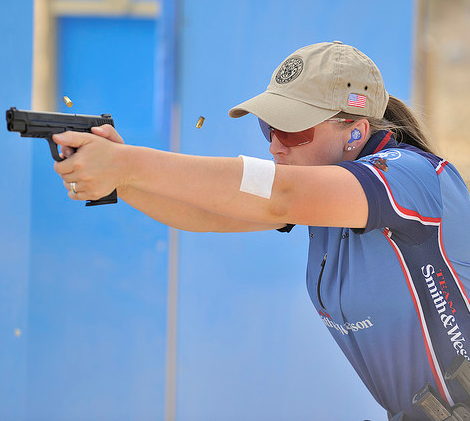
Julie Golob is one of the hottest shooters competing in action pistol and 3-gun and is captain of the Smith & Wesson shooting team. So if you want to learn to handle a handgun better, listen up amigos. Here’s what Julie had to say when I talked with her the other day.
Q: What’s the most common question shooters ask about pistol control?
A: How to control recoil better. There are two main steps. Grip is the obvious one, then there’s stance. The smaller you are the more aggressive your stance needs to be.
Q: How would describe your “aggressive” stance?
A: I like to stand with my feet more than shoulder-width apart, which is wider than what most shooting instructors suggest. In fact, my feet are about double shoulder-width apart.
I’m a right-handed shooter, so my right foot is a bit further back than my left. I lean forward into the gun, bending at the waist, with my weight on the balls of my feet. This wider stance helps me get lower to the ground and have less of a teeter-totter effect when shooting.
Q: What about your grip?
A: I like to get a high grip on the gun, gripping as strongly as I can with my strong hand, but not so much that my hand shakes. I also cant the wrist of my support hand down so that my thumb is pointing straight down range. I wrap my support hand fingers around my strong hand, with the fingers overlapping. My support hand thumb fits under my strong hand thumb like a puzzle piece. I don’t want any gap between my hands. I squeeze my support hand fingers toward my palm. Last, I use my chest muscles to compress the palms of my hands together around the back of the grip.

Q: What’s your advice on trigger control?
A: Where you place your trigger finger is critical. Ideally, I want the full pad of my trigger finger on the face of the trigger. Gun fit here is key.
For a large-framed gun I have to adjust my grip to get my trigger finger in the right spot–so you have to be flexible with your grip depending on the firearm you’re using. But if you’re going to shoot something a lot, you want to make sure it fits you.
Q: What are the other key points to shoot rapidly and well?
A: It pays to learn the reset point of the trigger–that will help you gain speed.
One thing that separates action pistol shooters from precision pistol shooters is that our trigger control isn’t as great, because we are aiming for speed. The biggest problem for action shooters is anticipating the recoil and yanking the gun off target during the trigger stroke. The fix is the old classic of learning how to let the shot happen. You want to train to pull through an entire trigger stroke while watching your sights stay on the target.
Photos: Smith and Wesson
